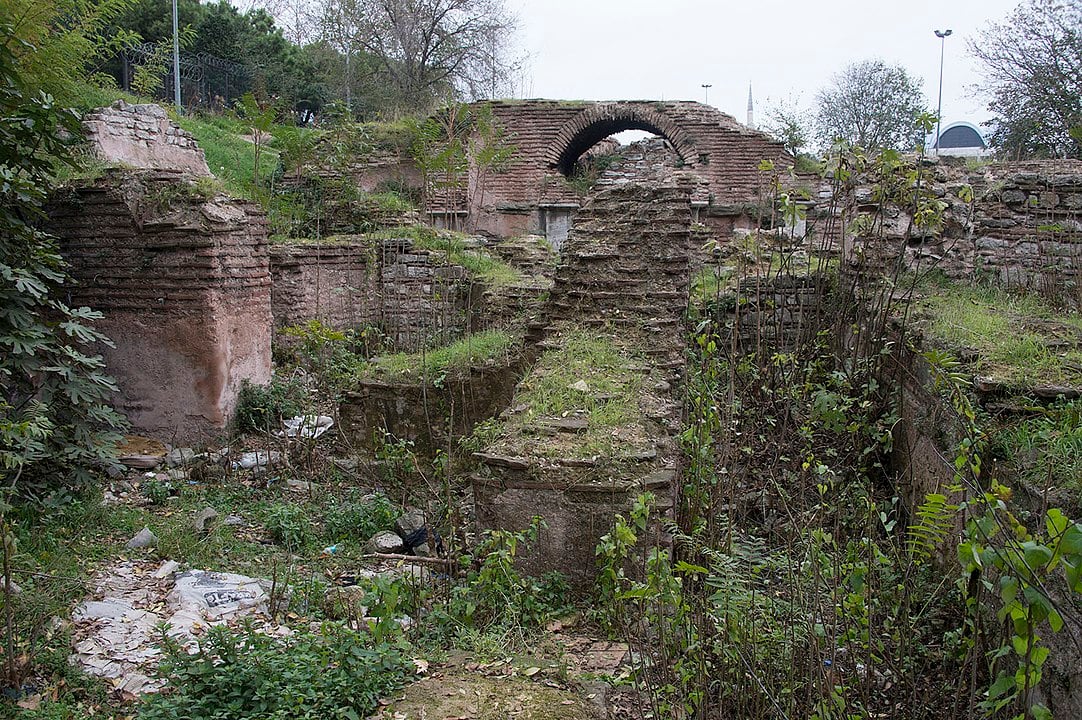
Archaeologists from the Istanbul Archaeology Museums have been excavating the ancient Byzantine Church of St. Polyeuktos in the Saraçhane neighborhood of Istanbul, Turkey.
The church was built between AD 524 and 527 by Anicia Juliana, a Roman princess during the reign of Justin I, to show off her own royal heritage. It was the largest church in the city until the Hagia Sophia was constructed.
The church was designed with lavish decorations that included elements from Sassanid Persian art. It is also thought to have been one of the first buildings to use the architectural style of a domed basilica, which was later improved upon in the design of the Hagia Sophia.
Not much is known of the church’s history after it was built. It stayed standing until the 11th century but later fell into ruin, and some of its parts were taken and used in Constantinople (now called Istanbul).
During Ottoman rule, the place where the church used to be was built over. However, in the 1960s, while excavations were being carried out, it was rediscovered.
The museum’s director, Rahmi Asal, shared that the church was severely damaged, mostly when the Latin people invaded. Later, an earthquake in AD 1010 caused more damage, and some parts were used to build St. Mark’s Basilica in Venice.
Remains of 1,500-year-old church unearthed in Istanbul
Church of St. Polyeuktos was built by Eastern Roman Princess Anicia Juliana, who wanted to show power against Emperor Justinianus and his wife Theodora, says archaeologist#News #DailyNews #LiveNews #WorldNews#World pic.twitter.com/sCxQZJV3sY— Breaking News (@FastNews77) May 4, 2023
Discovery of statue of a male’s torso from the Late Roman period
Excavations at the site have unearthed some valuable decorative stones and parts of the building’s architecture. The most remarkable discovery is part of a statue made of marble, which depicts the torso of a male figure.
This torso was discovered approximately one meter beneath the ground’s surface and belongs to the Late Roman period, dating back to the 3rd or 4th century AD.
The recent discovery adds to another finding that was announced in April 2023. During that excavation, the team uncovered a secret tunnel below the church’s ruins.
This tunnel was made of marble and had beautiful reliefs on it. Additionally, the team found 681 bronze coins, stamped bricks, marble pieces, ceramics, oil lamps, glass, and metal objects.
Early excavations at the Church of St. Polyeuktos
Between 1964 and 1969, Nezih Firatli from the Istanbul Archaeological Museum and Richard Martin Harrison from the Dumbarton Oaks Institute carried out archaeological work.
Harrison proposed a reconstruction of the church, which he believed was a basilica with a nearly square plan of about 52 meters on each side. It had a central nave and two side aisles, along with a narthex and a spacious atrium that was 26 meters long.
North of the atrium, the archaeologists found traces of another building, but they couldn’t identify it. It could have been a baptistry or perhaps the palace of Anicia Juliana, according to Turkish Archeological News.
The central oval substructure inside the church likely held the ambon, and the sturdy foundations suggested to Harrison that the church was built with a dome that was over 30 meters high.
See all the latest news from Greece and the world at Greekreporter.com. Contact our newsroom to report an update or send your story, photos and videos. Follow GR on Google News and subscribe here to our daily email!



